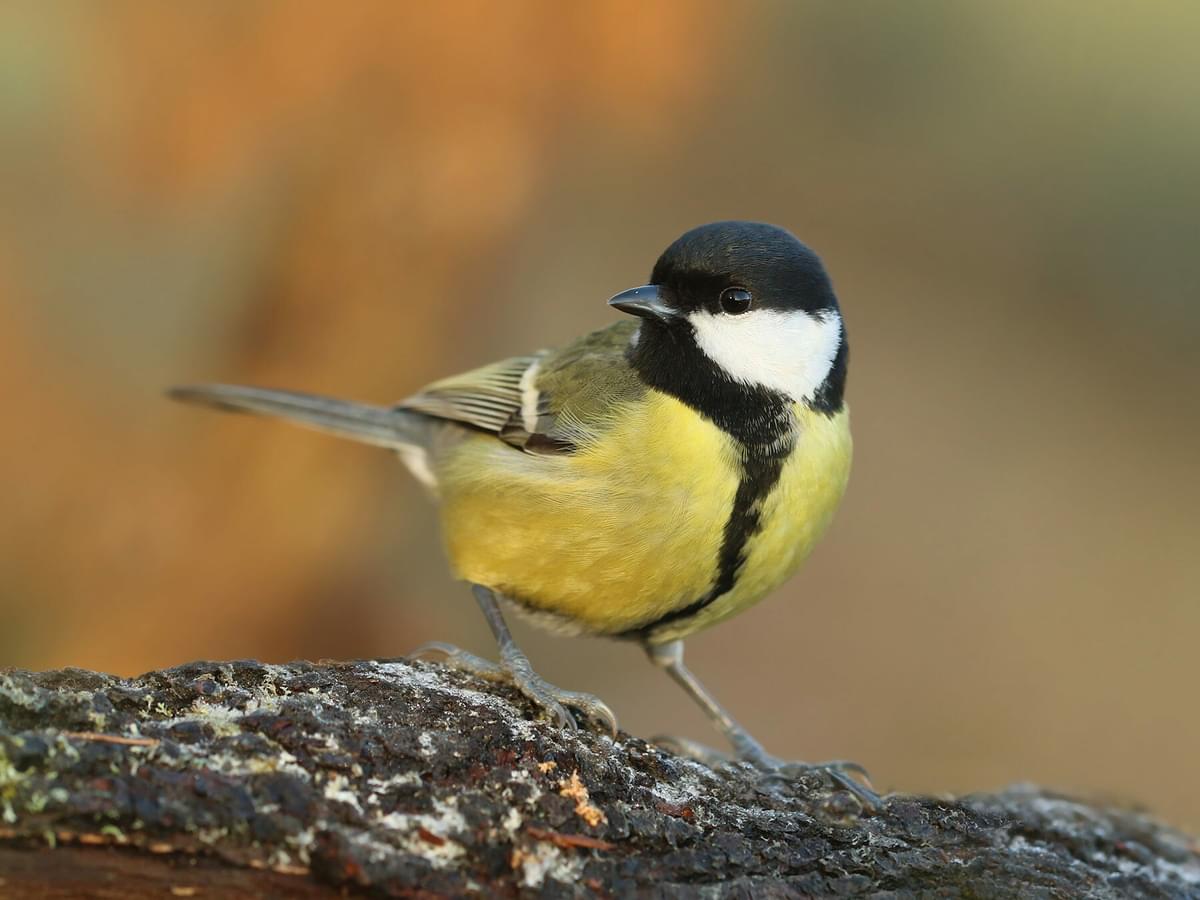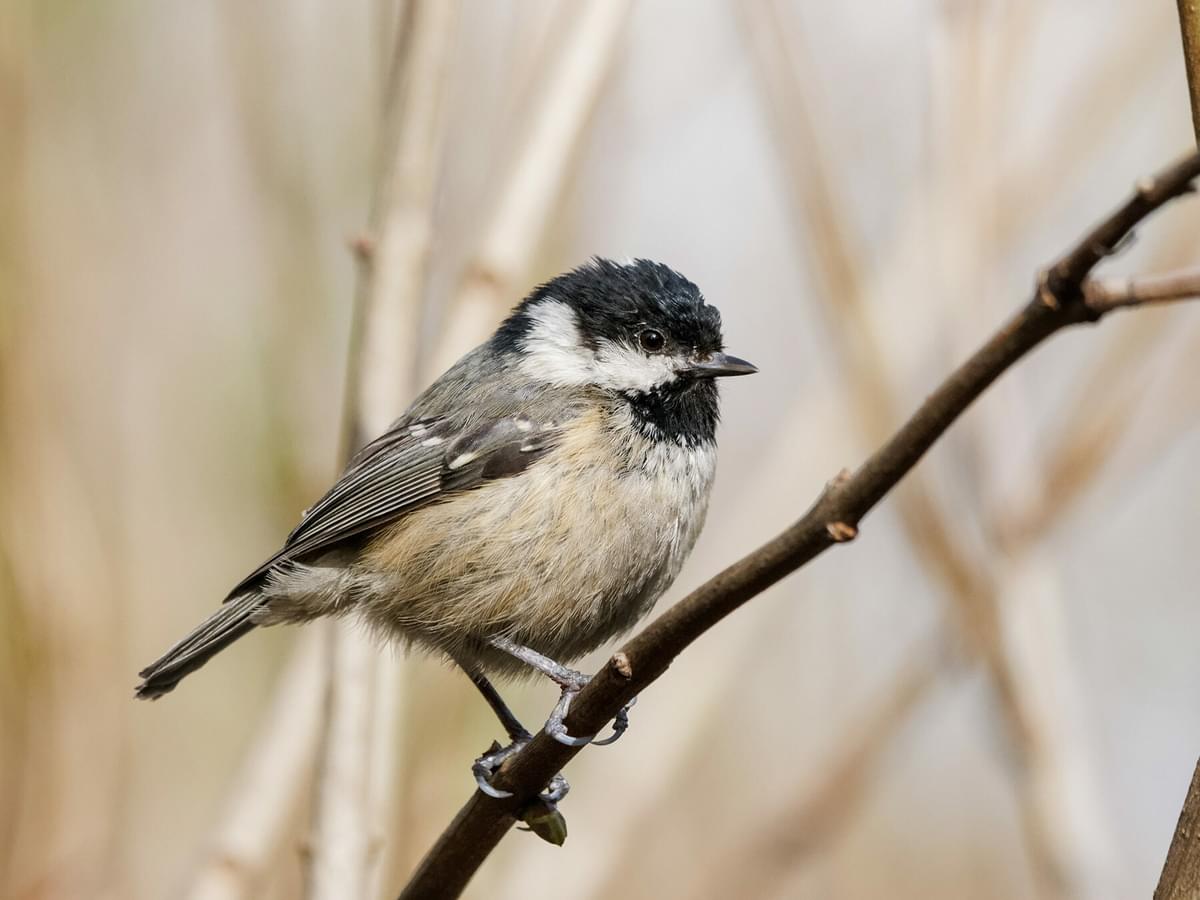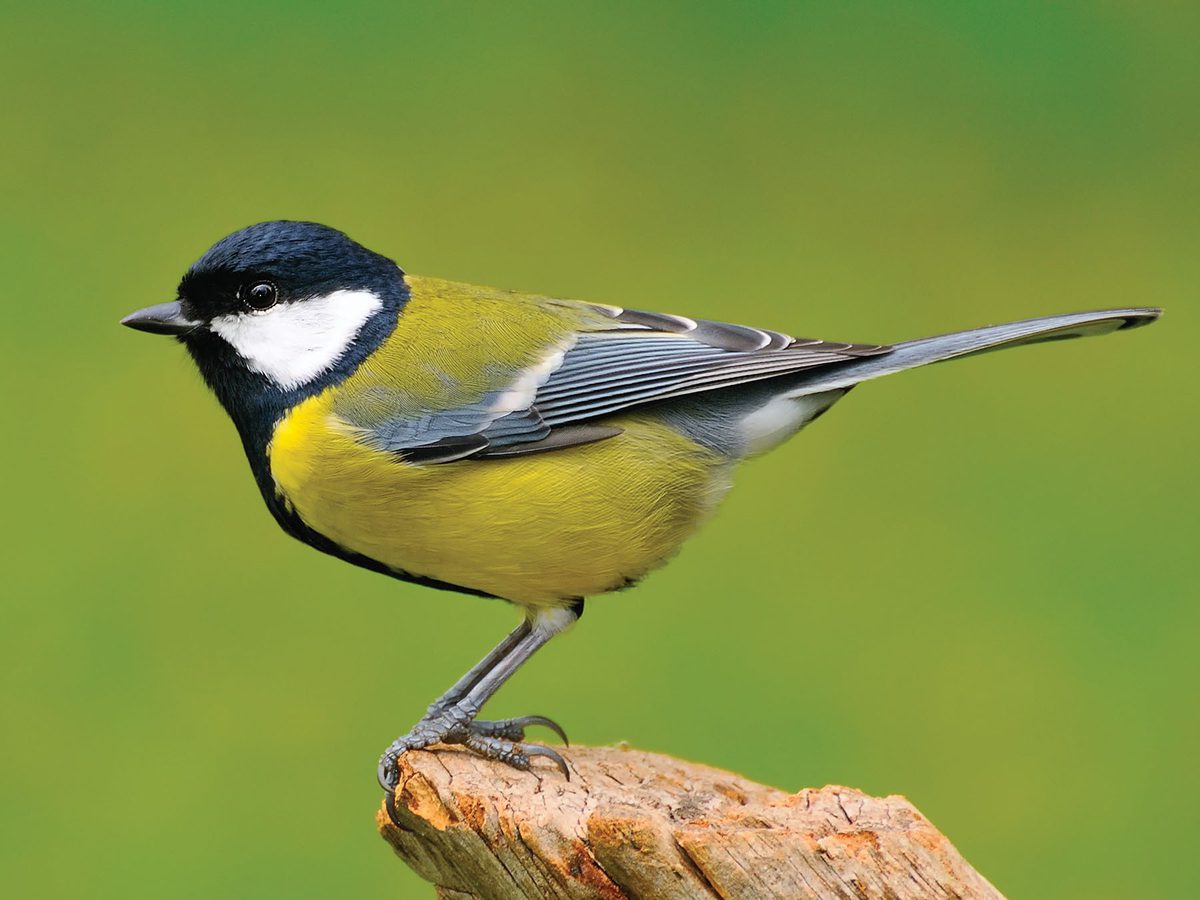Coal Tits (Periparus ater) and Great Tits (Parus major) are both common and widespread species of the tit family (Paridae) and can be found mainly in most parts of Europe, Asia and northern parts of Africa. They both have similarities, including their habitat and some of their features, so it's common that people can have trouble telling them apart.
The best way to tell the difference between a Coal Tit and Great Tit is by the colour of their plumages and their size.
- Great Tits have a bolder and more striking plumage of olive-green and yellow with a distinctive black stripe that runs down the centre.
- Coal Tits have mainly a dullish-grey plumage with mixtures of buff.
- Coal Tits are also quite a bit smaller than the great tit. Both birds have black on their heads and white under the eye.
There are a few more ways to distinguish these species, which we will go into more detail below. We'll also touch upon some commonalities and frequently asked questions too.

Close up of a Coal Tit

Close up of a Great Tit
Comparison Table
| Feature | Coal Tit | Great Tit |
|---|---|---|
| Size | Smaller; about 10-11.5 cm (4-4.5 inches) in length | Larger; about 12.5-14 cm (5-5.5 inches) in length |
| Weight | Lighter; around 7-10 grams | Heavier; typically 14-21 grams |
| Appearance | Grey-black back with an off-white underside | Greenish back with a yellow underside |
| Distinctive white patch on the back of the neck (nape) | Black stripe down the center of the belly | |
| Black cap and white cheeks | Black head with white cheeks | |
| Song and Calls | High-pitched and repetitive call, less varied than Great Tit | Louder and more varied song with a distinctive "teacher-teacher" call |
| Habitat | Prefers coniferous woodlands but also found in mixed and deciduous woods | Adaptable; found in woodlands, gardens, and parks |
| Distribution | Widespread across Europe and parts of Asia | Broadly distributed across Europe, Middle East, Central and Northern Asia |
| Breeding | Nests in tree holes and nest boxes, often lower down than Great Tits | Prefers to nest higher up in trees or nest boxes |
| Diet | Insects, spiders, seeds, and nuts | More varied; includes insects, seeds, nuts, and fruit |
| Behaviour | More agile, often seen hanging upside down on branches | Bold and inquisitive, often the dominant bird at feeders |
| Conservation Status | Least Concern, stable population | Least Concern, widespread and abundant |
| Identification Tips | Look for the white nape patch and smaller size | Note the larger size, black stripe on belly, and bright colours |
Size
Great Tits are the largest common member of the tit family and are much larger than Coal Tits.
This can be a great way to tell the difference when they are both in the same place, such as a feeder in the garden or far aware where the plumage is difficult to distinguish.
Great Tits, on average, are 14cm in length, have wingspans of 24cm and weigh around 18 grams. Coal Tits, on the other hand, have average sizes of just 11.5cm in length, a wingspan of 19cm, and an average weight of 9 grams - which is all considerably less than the measurements of a great tit.
Coal Tit
Periparus ater

Length
10-11.5cm
Wingspan
17-21cm
Weight
8-10g
Which is more common?
In Britain, you're much more likely to see a great tit rather than a coal tit. This is because there is estimated to be over 2.4 million breeding pairs of great tits compared to around 660,000 breeding pairs of coal tits.
Coal Tits are resident breeders in the UK, and Great Tits have a substantial resident breeding population as well; however, there is also a wintering population that comes and spends time here over the colder months.
Both these species can be found year-round across the majority of the UK; however, there are a few places in Scotland they cannot be found.
Great Tit
Parus major

Length
14-16cm
Wingspan
24-26cm
Weight
14-22g
Other Differences
Plumage
Both the great tit and coal tit have black caps on their heads and contrasting white cheeks underneath. They also both have black eyes and similar dark beaks - although the great tit has a larger one, as they are proportionately larger.
The legs are also a similar colour, which is greyish.
Coal Tit Plumage
The plumage of a coal tit (or cole tit) is somewhat muted overall because of the dull colours on their body. The underparts are mostly a creamy buff colour, and the upperparts are predominantly greyish but can sometimes have flashes of a pale olive.
The wings are mostly dark grey and have two clearly defined white bars/
Juvenile Coal Tits are mainly similar to adults; however, young birds have a slightly yellow tinge on their cheeks, which are white on adults.
Great Tit Plumage
Great Tits have bold and striking plumages. The yellow underparts, which is halved by a central black band, are one of their most distinguishable features. The upperparts are mainly an olive-green colour.
The wings are mainly dark and have white detailing, and there is also usually one prominent white stripe across the wing.
The tail of a great tit is also proportionately longer than most other tits (other than the long-tailed tit), which they use for both communication and manoeuvrability.
Juvenile great tits have similar plumages to adults, but they have lighter markings on the head and also have yellowish tinges on the cheeks, instead of the bright white.

Juvenile Coal Tit

Juvenile Great Tit
Song and Call
Great Tits and Coal Tits are both fairly vocal; however, if compared, the great tit tends to be more vocal between the two.
The song of the great tit is a repetition of cheerful high-pitched calls similar to a 'ti-ta ti-ta' sound. their calls are also high pitched and can sometimes be a harsh 'che che che che', which is similar in a way to a magpie.
The call and song of a coal tit is also high pitched ad the song is a 'seetoo, seetoo, seetoo' sound.
Coal Tit Call/Song
Stuart Fisher, XC627893. Accessible at www.xeno-canto.org/627893.
Great Tit Call
Jorge Leitão, XC676430. Accessible at www.xeno-canto.org/676430.
Behaviour
Great Tits generally have bolder personalities and often use their size to dominate and scare off other birds from feeders. Coal Tits are generally quite bold too, but the size advantage of the great tit usually ends up with them 'winning' any battles at feeders.
It's thought that part of this bold personality comes down to great tits feeding their babies spiders, which contain high taurine levels - research has shown a link between this and more confident and higher intelligent birds.
Both birds are generally gregarious and flock with others outside of the breeding season and sometimes even other tits.
Habitat
Both coal tits and great tits tend to have similar habitats, which is one of the main reasons why people can have issues with differentiating between the two.
The habitats are the same, and both species prefer pretty much any areas with trees, such as woodlands, parks and gardens in towns, villages and cities.
The only real difference is that coal tits like and often prefer coniferous forests and woodlands, whereas great tits tend to avoid woodland with coniferous trees.

Great Tit in flight
Diet
Both birds have similar diets, which consist mainly of insects, spiders, nuts, fruits and seeds.
Great Tits love sunflower seeds from bird feeders, so be sure to stock your feeders full of them to attract them to your garden.
Coal Tits are particularly fond of conifer seeds - which is why they like coniferous woodland. They also tend to obtain their food and take it away from the area to hide it, to consume later.
Migration
The majority of great tits in the UK are residents and therefore stay all year round. A small wintering population migrates south and ends up in the UK over the colder months.
Coal Tits are all generally resident, and spend all year in the UK and will not migrate.
Breeding
Both the coal tit and great tit usually start breeding in March. Coal Tits usually end their breeding season in July, and great tits usually finish earlier, around May.
Great Tits usually lay between six and eleven eggs, and coal tits lay clutches of between five and thirteen eggs.

Coal Tit perched on a tree branch
Life expectancy
The average lifespan for a great tit is around three years on average, and the average for a coal tit is slightly shorter at two years.
Conservation status
In the UK, both the coal tit and great tit are categorised as green; this means the populations are generally stable, and there is no cause for concern for the species.
Globally, they are both on the IUCN list as Least Concern. This also means that the number of birds is at a consistent level, and there is no cause for concern.
The only difference between the two is that it's thought that the population of great tits is increasing due to recent range expansions, and coal tits are slightly decreasing - although they are decreasing, it's not at a rate that there is a cause for concern.
In Europe alone, there is an estimated breeding population of between 10 and 27 million pairs of coal tits. Great Tits, on the other hand, are estimated to have a European breeding population of between 65 and 106 million pairs.
This means just in Europe; there is up to an estimated 54 million coal tits and 212 million great tits!
Compare Coal Tit and Great Tit

Coal Tit
Periparus ater
Other names: Cole Tit
Length:
10cm to 11.5cm
Wingspan:
17cm to 21cm
Weight:
8g to 10g

Great Tit
Parus major
Other names: Kohlmeise, Mésange charbonnière
Length:
14cm to 16cm
Wingspan:
24cm to 26cm
Weight:
14g to 22g
